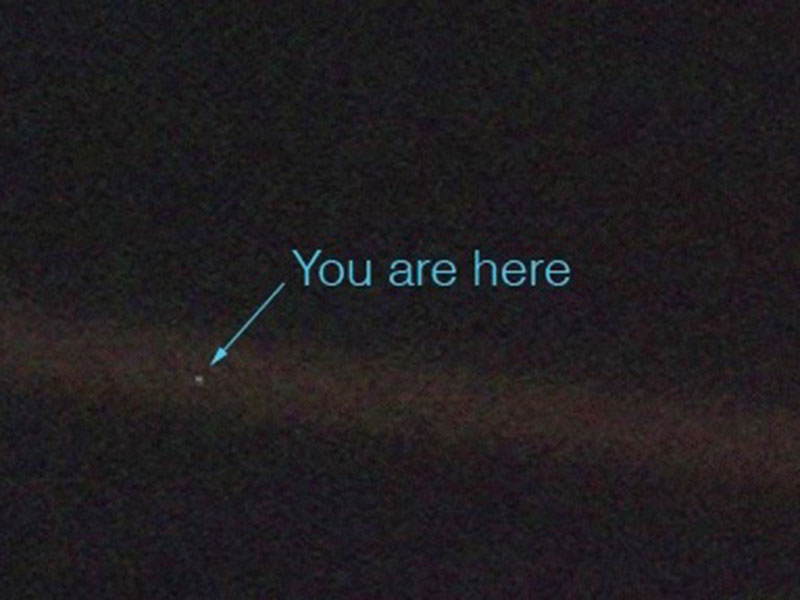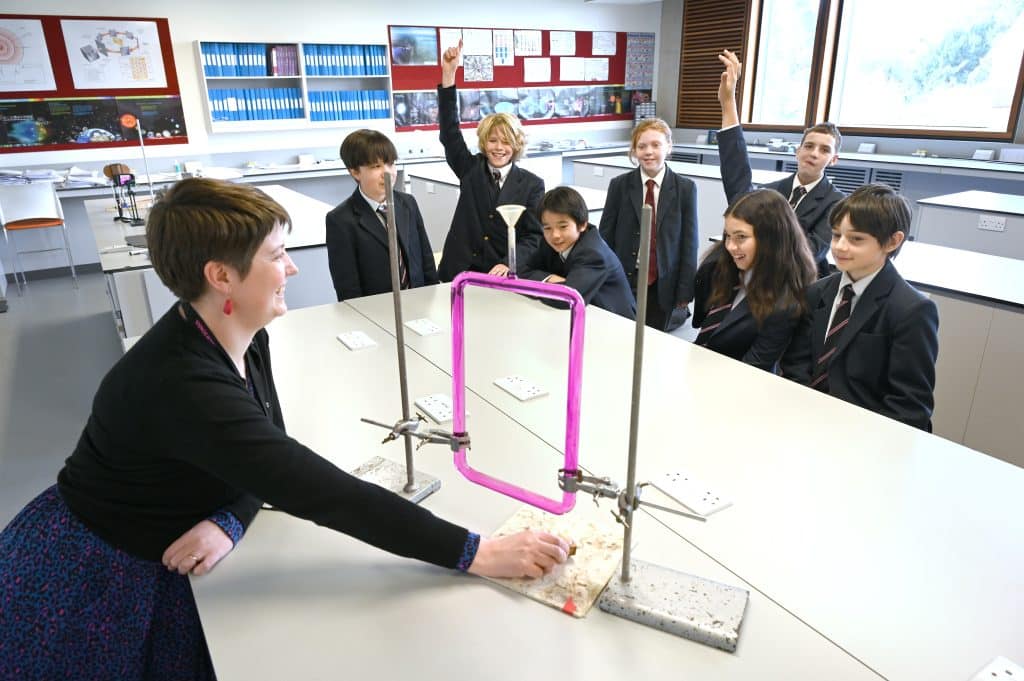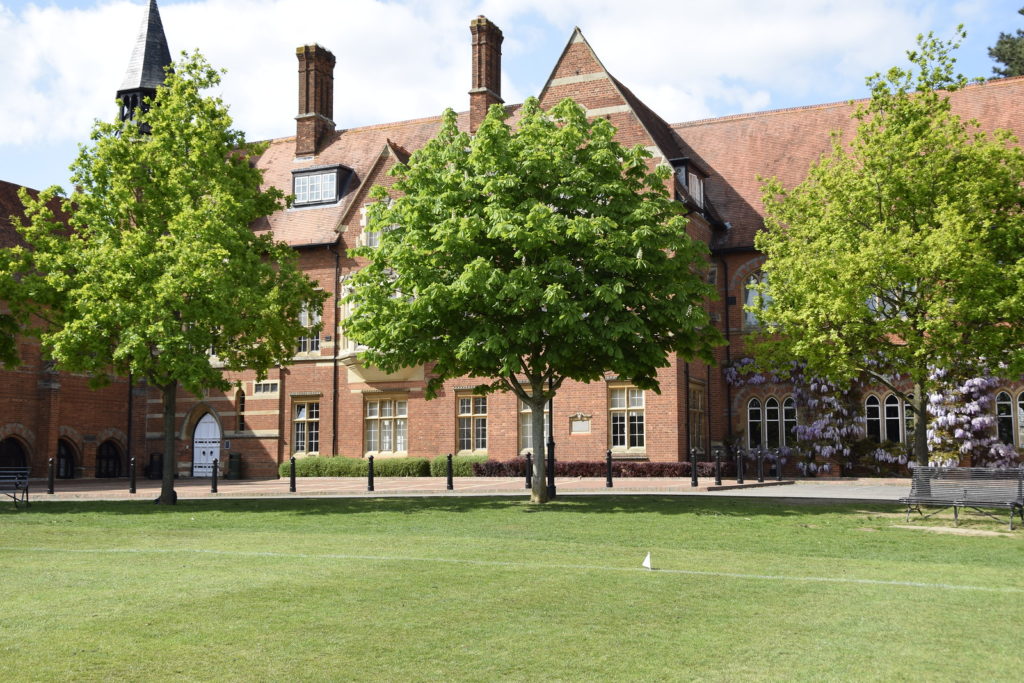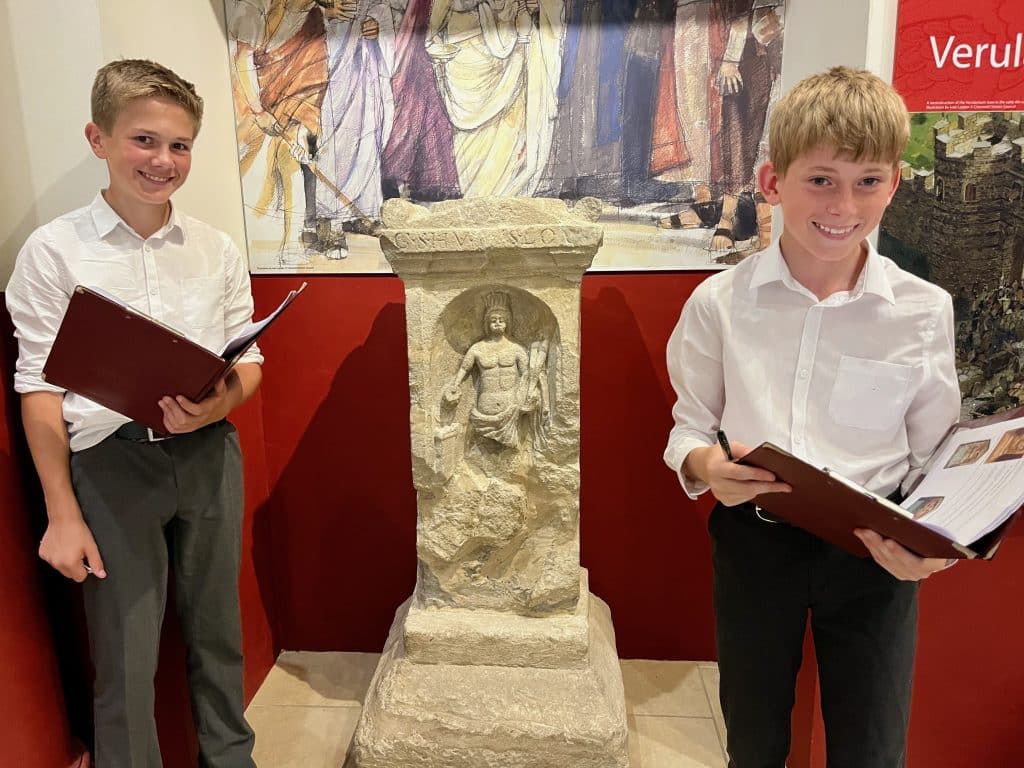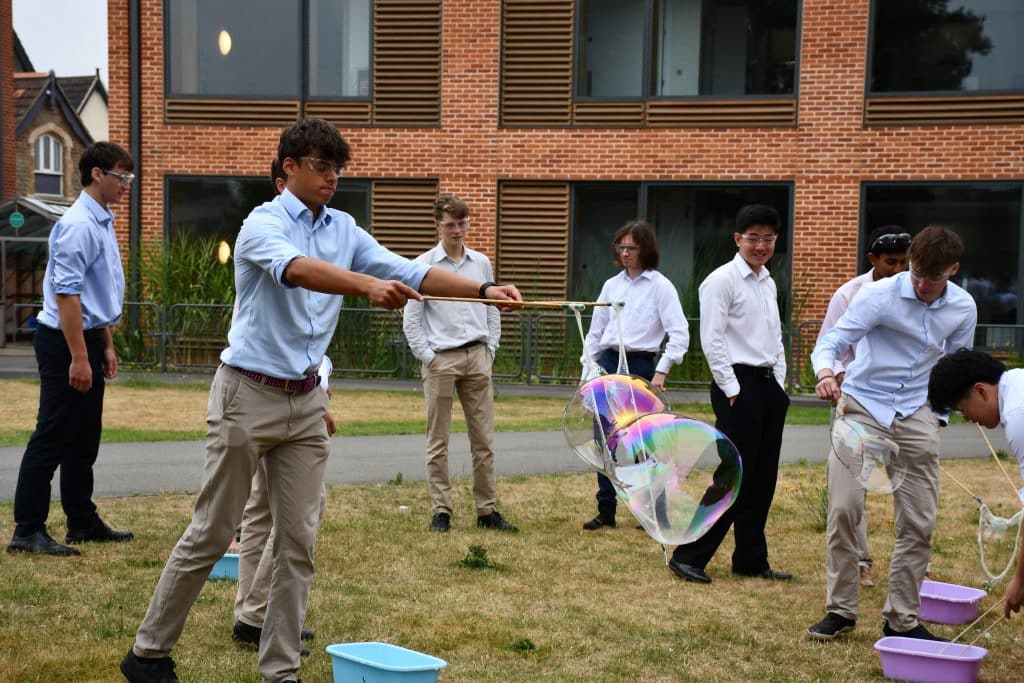Getting Some Perspective: GCSE Astronomy
By Alice Perry, Physics Teacher
When was the last time you looked up at the stars at night? With our busy lives, it is so easy to forget to take a moment to pause and reflect on our position in the universe. On average, when we look up to the sky we can see only 0.000002% of all the stars in our galaxy. The Milky Way contains 100 billion stars, and is one of 100 billion galaxies in the universe; there are more stars in the universe than grains of sand on Earth!
Sunlight takes eight minutes to reach us from the Sun’s surface. To put humanity’s reach into perspective, think of the Apollo Moon landings – considered by many to be the pinnacle of our technological achievements. The Moon is so distant from Earth that all of the other planets in our Solar System would fit in between, with space to spare. It took Apollo’s astronauts 3 days to travel the distance. It would take light 1.3 seconds.
In times of stress, it is difficult to imagine anything grander than the obstacle you face, but it is important to remind yourself of the Bigger Picture. A disappointing exam score seems insignificant against the backdrop of the cosmos. The three weeks until summer holidays begin might seem to stretch on and on, but compared to a universe 13.8 billion years old, it will pass in the blink of an eye.
As summarized by Ernest Cline in his book Ready Player One, “whenever I saw the Sun, I reminded myself that I was looking at a star. One of over a hundred billion in our galaxy. A galaxy that was just one of billions of other galaxies in the observable universe. This helped me keep things in perspective.”
From Earth’s own atmosphere to the entire observable universe, astronomy answers our greatest questions, and our simplest:
- Astronomy is not an abstract topic; its study can have immediate impact on our lives today. Everything from your mobile phone’s camera and GPS to defence technology and MRI scanners were made possible thanks to astronomical research.
- Studying astronomy is studying where we as humans come from – the atoms inside our own bodies were forged in dying stars. As Carl Sagan said in 1973, “The nitrogen in our DNA, the calcium in our teeth, the iron in our blood, the carbon in our apple pies were made in the interiors of collapsing stars. We are made of starstuff.”
Getting Started with Astronomy: It’s not rocket science!
“Astronomers, like burglars and jazz musicians, operate best at night.” — Miles Kington, Journalist
Once you have waited for twilight, and hopefully avoided the inevitable British cloud cover, head outside. You might consider bringing the following:
- A red torch or red filter/app for your mobile phone. Red light will preserve your night vision whilst still allowing you to see around you.
- An app such as Star Chart (IOS, Android), Google Sky Map (Android), or ISS Detector (Android), or a physical star chart.
- A blanket.
- Binoculars – even the most basic pair will amplify your stargazing experience.
Here’s a quick 5-step guide to getting started with astronomy:
- Find an observing spot away from streetlights & floodlights.
- Locate the Moon and determine its phase. New Moon, full Moon, crescent Moon and so on; astronomy is best done on the nights around a new Moon, when the sky is at its darkest.
- Locate any planets that are visible. Use your star chart/app to find them in the sky – planets will be very bright, and do not ‘twinkle’ as the stars do. Mars appears red, and Venus, our closest neighbour, is astonishingly bright, however only appears just before dawn in the summer months.
- Locate the constellations of Ursa Major (the Big Dipper) and Cassiopeia (a W shape). These should point you to the North Star, Polaris, and hence you can orientate yourself to the cardinal directions.
- Now you can start to locate other constellations in the night sky, for example Orion in the wintertime, or the Summer Triangle. It is fascinating to read of the ancient Greek and Roman myths which inspired the drawing of the constellations.
On a particularly clear night, or from a location far away from the light pollution of a large city, it is possible to see the Milky Way – a dusty band of stars stretching across the sky. Here, you are looking into the centre of our galaxy itself.
As the writer Arthur C. Clark said, “astronomy, as nothing else can do, teaches men humility.”
Join us for Astronomy Club, or download Star Chart, grab a blanket, and head outside.
For more astronomical inspiration, I leave you with the immortal words of Carl Sagan, and the Pale Blue Dot.
Back to all Blogs